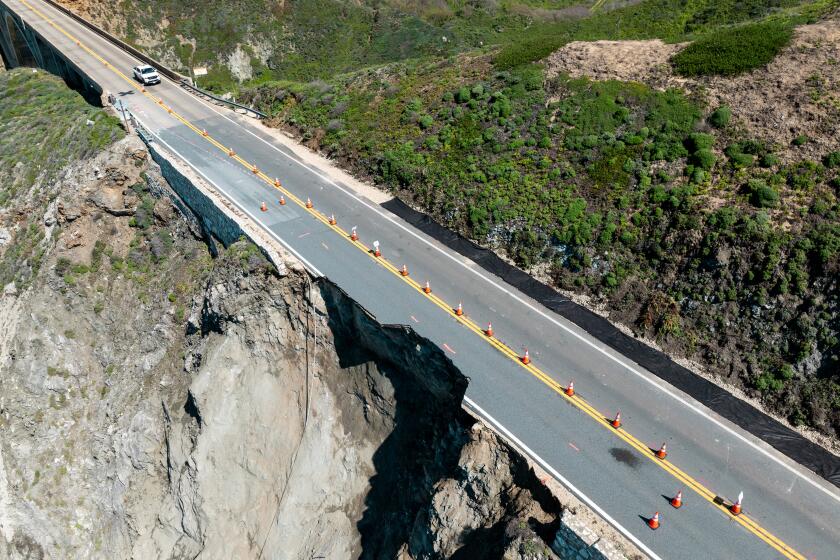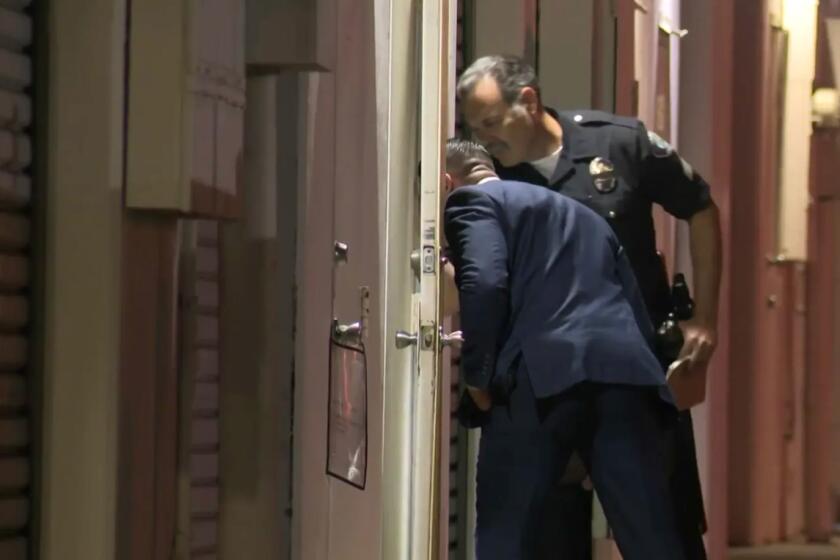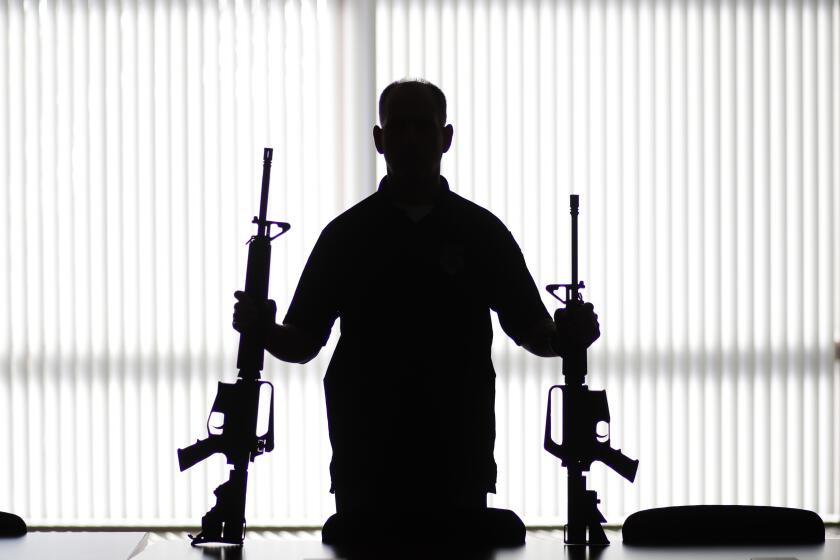Ft. Sumter: Where Civil War Began : Park Service Seeking to Restore Historic Monument
“Everyone knows the first shots of the Civil War were fired here but few know anything else about Ft. Sumter,” said National Park Service ranger David Ruth.
Ruth, 34, who for eight years has been ranger in charge of interpretation at Ft. Sumter National Monument, was greeting a boatload of visitors to this 2 1/2-acre island in Charleston Harbor--where the Civil War began.
“Most people don’t realize that the North and South fought over this tiny strip of land for four years, throughout the entire length of the Civil War,” Ruth continued.
“Ft. Sumter was the South’s symbol of nationhood and had to be defended at all costs. It was a symbol of secession for the North, and had to be taken at whatever the cost.”
Each year, more than 200,000 learn the dramatic story of Ft. Sumter when they make the seven-mile, half-hour boat trip from Charleston.
Ft. Sumter has stood in ruins for 124 years.
The top two tiers of the three-story, five-sided fort were destroyed by Union forces. And for four long years, the Confederate defenders withstood attack in one of the most heroic defenses of a fortress in human history.
But recently, the Park Service launched a study to determine the feasibility of restoring at least part of the fort, to show what it was like when the war began April 12, 1861.
Major Robert Anderson and his 85 officers and men stationed at Ft. Sumter knew they were in a precarious position on the tiny island when the South Carolina Legislature voted unanimously Dec. 20, 1860, to secede from the Union.
Other states quickly followed and two months later, a provisional government of Confederate states was established at Montgomery, Ala., with Jefferson Davis elected president.
Confederate batteries ringed the shoreline of Charleston Harbor with cannons and mortars. On April 11, 1861, the Confederates demanded that Anderson and his men evacuate Ft. Sumter. Anderson refused. The next day at 4:30 a.m., a mortar shell was fired and exploded directly over the federal fort.
Within minutes, 43 Confederate cannons and mortars were blasting away at Ft. Sumter. Capt. Abner Doubleday, second in command at the fort, the man who originated the rules for baseball in 1839 at Cooperstown, N.Y., was the first to return fire for the North.
The bombardment continued for two days with the Union forces returning fire until finally Anderson surrendered and lowered the American flag. Remarkably, only one man was killed in the engagement, and that by accident, during the gun salute when the American flag was brought down.
From the day the federal forces left Ft. Sumter, the North was determined to retake the island. But Charleston was a Confederate stronghold, and Ft. Sumter was a key to the strategic harbor. The island fortress was rebuilt and strengthened and manned by 300 Confederate soldiers and as many as 200 slaves.
On April 5, 1863, a fleet of nine federal ironclads entered the harbor and sought to regain Ft. Sumter but were repulsed. One ship was sunk, four were disabled.
By August of that year, federal troops captured Morris Island across from, and within firing range, of Ft. Sumter. That began nearly two years of constant shelling of the fort.
Ironically, as the walls of the fort were blasted apart, the rubble piled up 20 feet around the first-tier casemates, giving the defenders bomb-proof rooms.
Slaves worked day and night filling sandbags to patch holes in the walls for reinforcement. Sand and other supplies were barged to the island at night. Throughout the four-year period, 56 Confederate defenders and about four times as many of the slaves supporting them were killed on the island.
Finally, in the last days of the war, the Confederates abandoned Ft. Sumter. Anderson, now a general, returned to the island and on April 14, 1865, raised the same tattered flag he had lowered four years to the date. The flag is in a museum on the island.
Abraham Lincoln had planned to come to Ft. Sumter for the flag raising but had second thoughts, stayed in Washington and went to the theater that night. Ironically, one of the last shots of the war took the life of the President.
The walled ruins of old Ft. Sumter are pocked with holes from Civil War projectiles. Three shells are still embedded in one wall. Cannons used in the battle for the fort by Union forces and the Confederates are still here.
A museum in the middle of the old parade grounds has a scale model of the fort, cannonballs, uniforms, photographs, graphics, letters, diaries and other memorabilia.
“From time to time,” Ruth noted, “descendants of Anderson’s men here at the time of the attack and descendants of the Confederate defenders will donate letters and diaries, or copies of them, that provide vital information as to what it was like at Ft. Sumter during the Civil War.”
He mentioned the copy of the reminiscences of Capt. Thomas A. Huguenin, the last Confederate commander of Ft. Sumter, recently given to the National Park Service by his family.
“One of the greatest accounts of the opening battle of the Civil War was written by Abner Doubleday,” said Ruth. “A fascinating book was written shortly after the war by Jacob Stroyer, a slave, one of the black workers supporting the Confederate defenders on the island.
“Stroyer describes his life during the war as a paradox. The first time he ever left his plantation was when he was sent to Ft. Sumter. Here he was a slave desperately wanting freedom, yet he was defending the South, repairing Ft. Sumter following each bombardment.”
Ruth said he turned down several opportunities to work in other national parks because of his fascination with the “incredible Ft. Sumter story. Sometimes I will spend a night alone on the island with the ghosts of long time and long ago.”
“I imagine what it must have been like when the Union soldiers held it, what it was like under heavy bombardment weeks on end when the Confederates were here. This small spot played a very significant role in the history of America.”
More to Read
Start your day right
Sign up for Essential California for news, features and recommendations from the L.A. Times and beyond in your inbox six days a week.
You may occasionally receive promotional content from the Los Angeles Times.






